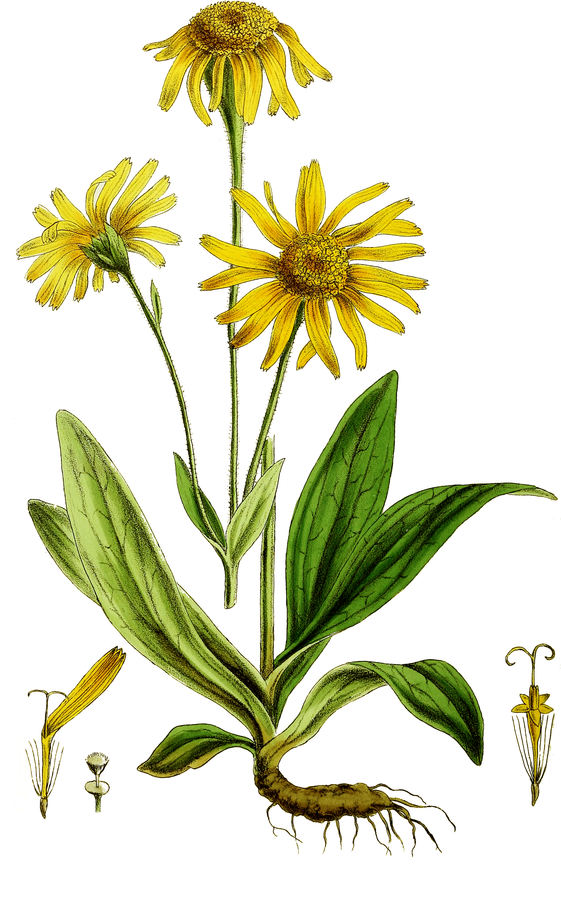Arnica
Excerpt from Ohno Suzu's family herbalism book:
Please note: Based on a real plant and this article is not meant as actual medical advice. It's simply a plant used medically in the story.
Flowers from this popular homeopathic herb can be used as a painkilling, anti-swelling, anti-bruising, or abortion-causing agent. The most common medicinal form is a spreadable yellow (homemade) salve or clear gel (store bought) for things like bug bites, bruises, arthritis, and sore muscles.Magical Healing:
It pairs well with magical healing, in Potion and Ofuda form. The medical properties mixed with a word of Kotodama in both of these forms allow the practitioner to expend less ki in order to heal the patient. Potions: Add the appropriate herbs and carrier oil combined with spirited sake. (Coconut and olive are good carriers oil for this.) Use the Kotodama for "relief" when preparing this. Infuse for 3 weeks, then strain. If a thick salve is needed, add 1:8 beeswax to oil. Lasts 1 year. Ofuda: Can be combined with a healing talisman for more extensive injuries.Warnings:
If ingested, the plant is poisonous and can cause heart-rate increase, digestive problems, high blood pressure, blood thinning, kidney and liver damage, coma, or death. Do not ingest any but the tiniest amount of this plant in a very diluted form. Salves with arnica may cause irritation. Do not use on broken skin.
Please note: Based on a real plant and this article is not meant as actual medical advice. It's simply a plant used medically in the story.
Basic Information
Anatomy
A 30 - 60 cm (1-2 ft) tall, vivid yellow daisy-like perennial flower. Two-inch bloom grows on a long thin, woody stem that may branch off into other blooms, while the ovate leaves remain at the base of the plant. The root is tuberous. It's scent is similar to pine and sage.
Growth Rate & Stages
Seeds sprout 2-3 weeks after planting. The plan may be propagated by root division.
Mid to late summer-blooming. Deadhead flowers to get more blooms.
Ecology and Habitats
Siberia, Eastern Europe, temperate climate of North America. Grows best in well-drained soil. Not drought resistant.
Conservation Status
Listed as vulnerable to critically endangered, depending on location.




Comments